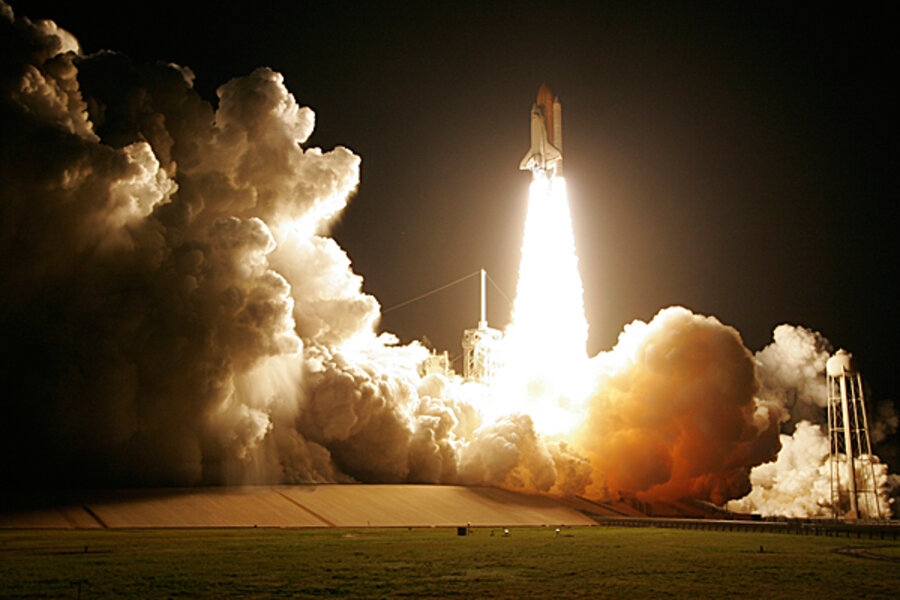After space shuttle launch: three spacewalks, among other chores
Loading...
The space shuttle Discovery and its seven-member crew launched into the predawn sky Monday at the Kennedy Space Center en route to the International Space Station.
The 13-day mission largely aims to continue outfitting the interior of the station and prepare it for life after the shuttle program ends later this year.
With the space shuttle launch, Discovery is lofting roughly 8 tons of cargo in Leonardo, a pressurized module in the cargo bay. It will become a permanent fixture on the station after the last shuttle flight. The orbiter also is carrying fresh science experiments to the ISS.
IN PICTURES: NASA's Space Shuttle
The to-do list includes three spacewalks. Astronauts will retrieve experiments located on the station's exterior, install fresh batteries associated with one of the station's solar-panel arrays, and perform other outside chores.
Inside, the crew will unload Leonardo, then repack it with science experiments, hardware no longer needed, and trash for the return trip.
For all the appearance of a mission dedicated to some cosmic spring sprucing, it remains a highly choreographed, aggressive task list, mission planners say.
"If you take a look at the spacewalks and the time of this mission, it's an extremely packed mission," says William Gerstenmaier, the National Aeronautics and Space Administration's associate administrator for space operations.
The imminent end of three decades of shuttle flights is lending a bittersweet element to this launch. After this one, three missions remain on the schedule.
"It's painful and sad to shut down the one program that's flying," acknowledges Mike Moses, who heads the prelaunch mission management team. Yet budgets, he adds, don't allow the agency to keep launching shuttles, operate the space station, and work on rockets that would allow space explorers to leave Earth orbit.
"It's tough to set it down," he says of the shuttle program. "But I can't wait for the next thing to come along, because that's going to be the future of human spaceflight" for the United States.
As if to underscore the shift, this mission marks the final launch with rookies as crew members. They include mission pilot and US Air Force Col. James Dutton Jr., as well as mission specialists Dorothy Metcalf-Lindenburger and Japan's Naoko Yamazaki.
Indeed, with women accounting for three of the shuttle's crew members, plus another woman serving on the station crew, Monday's launch marks the first time four women have been on orbit simultaneously.
The launch comes at a time of heightened uncertainty for the future of the US human spaceflight program.
The Obama administration's plans for NASA call for shutting down the Constellation program, started under former President George W. Bush to develop a new rocket and space capsule to lift astronauts into orbit, as well as a second rocket and the hardware needed to return to the moon.
Instead, the administration's budget proposal looks to private launch companies to provide cargo and crew transportation to the station, while NASA focuses on the research needed to develop rockets powerful enough to take astronauts beyond Earth orbit.
NASA has started to explore some generic concepts related to a new "heavy lift" rocket, Mr. Gerstenmaier says.
"We don't have anything well-enough refined to put a budget against it," he says. "We're trying to look at what missions we want to accomplish" and what kind of rocket "can support multiple destinations and multiple missions for us."
The White House's plan has received heavy criticism, particularly from members of Congress with NASA facilities in their states and districts. One key criticism: the plan's failure to identify in a high-profile way the destinations envisioned for the US human spaceflight program beyond low-Earth orbit.
Such objectives may become clearer when President Obama visits Florida April 15 to hold a space summit.





